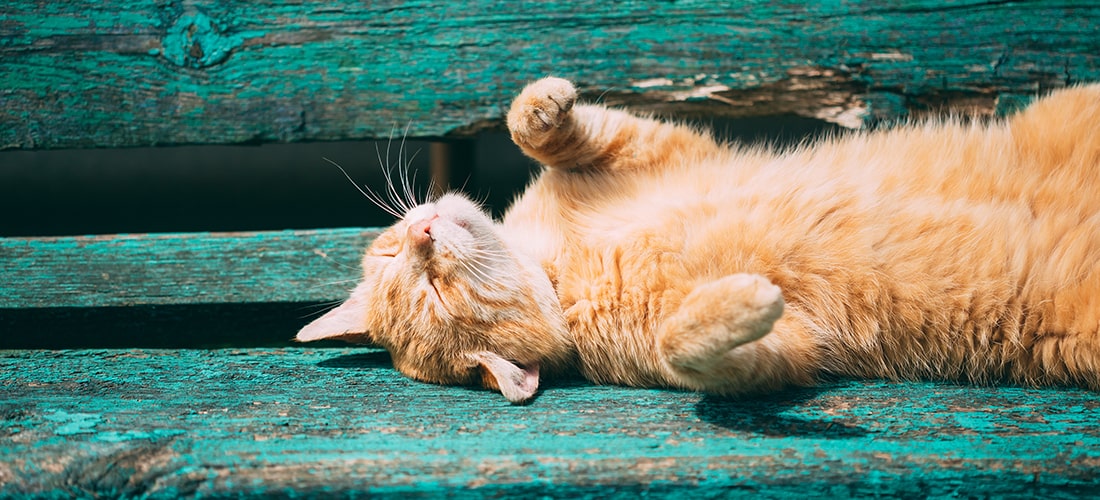Sunburn in pets
Overview
- Just like us, pets can get sunburnt on sunny days – especially if they have light coloured fur or a thin/patchy coat.
- Sunburn is painful, and the skin damage it causes can sometimes lead to skin cancer.
- So, how can we protect our pets from the sun’s harmful rays and what are the signs of skin cancer?

Sunburn doesn’t only affect people, it affects pets too! The most common places for pets to get sunburnt are their ears, nose, eyelids and tummy – and they are especially at risk if they are light coloured (ginger/white), or have any thin fur/bald patches. It’s important to protect your pet from sunburn, not only because it’s painful but because it can also sometimes lead to skin cancer.

Mild sunburn
Mild sunburn often heals within a few days with treatment at home. Treatment can include:
- Cold compresses to gently cool your pet’s skin
- Keeping them out of direct sunlight until their skin has healed
- Using sunblock or sun protective clothing to protect their skin if they need to go outside
Severe sunburn
Severe sunburn should always be checked by your vet straight away. Treatment may include:
- Pain relief, anti-inflammatories and wound dressings
- A fluid drip and antibiotics if their burns are very severe
Call your vet practice for advice if you are unsure how serious your pet’s burns are.
Preventing sunburn
If it’s sunny enough for you to need sun cream, your pet will probably need protection too – especially if they have patchy or thin fur. Follow our tips below to keep them safe:
Keep them out of the sun
- Avoid walking your dog in the middle of hot days when the sun is strongest – instead, stick to the mornings and evenings.
- Don’t allow your pet to sunbathe in direct sunlight.
- Make sure they always have access to plenty of shade – trees and shrubs make great shade for dogs and cats, and a blanket draped over part of their run is an easy way to create shade for rabbits and guinea pigs.
Apply sunblock
- Apply sunscreen to any areas where your pet’s fur is thin i.e. their nose, ear tips and tummy.
- Make sure the sunblock you are using is pet/child safe, SPF30 or higher, and waterproof – check out our pet-safe sunblock range.
- Apply two layers at least 15 minutes before your pet goes outside, discourage them from licking it off, and remember to reapply as necessary.
 Video found at youtu.be/v6bdJIz82Co
Video found at youtu.be/v6bdJIz82Co
Skin cancer in pets
There is a specific type of skin cancer called ‘squamous cell carcinoma’ that is caused by exposure to the sun’s harmful UV-rays. It’s not common, but it’s important to know the signs because it can be quite aggressive and needs to be treated as quickly as possible. The most common signs of squamous cell carcinoma include dark patches, non-healing wounds and scabs on exposed sections of skin, such as the ear tips, nose and eyelids.
Published: December 2021
Did you find this page useful?
Tell us more
Please note, our vets and nurses are unable to respond to questions via this form. If you are concerned about your pet’s health, please contact your vet directly.
Thank you for your feedback
Want to hear more about PDSA and get pet care tips from our vet experts?
Sign up to our e-newsletter
Written by vets and vet nurses. This advice is for UK pets only. Illustrations by Samantha Elmhurst.

